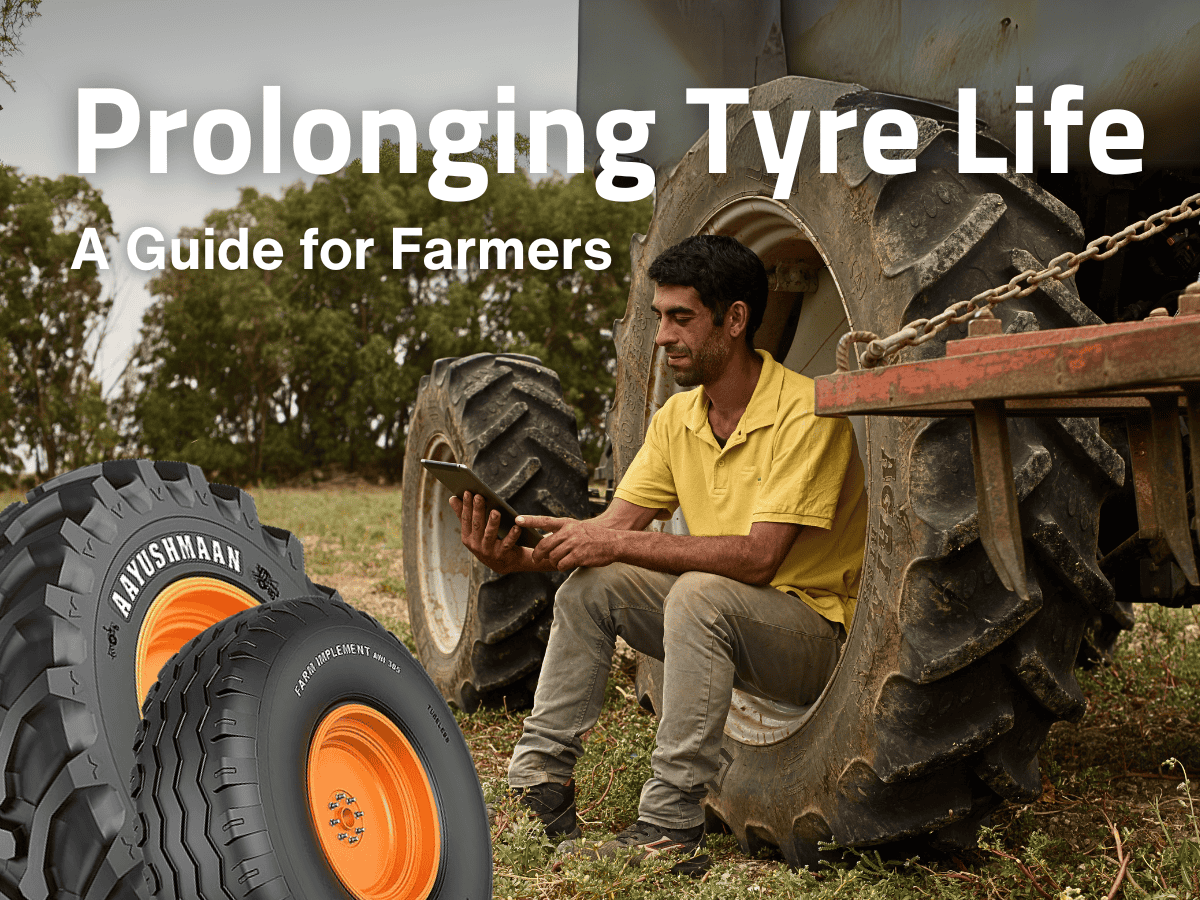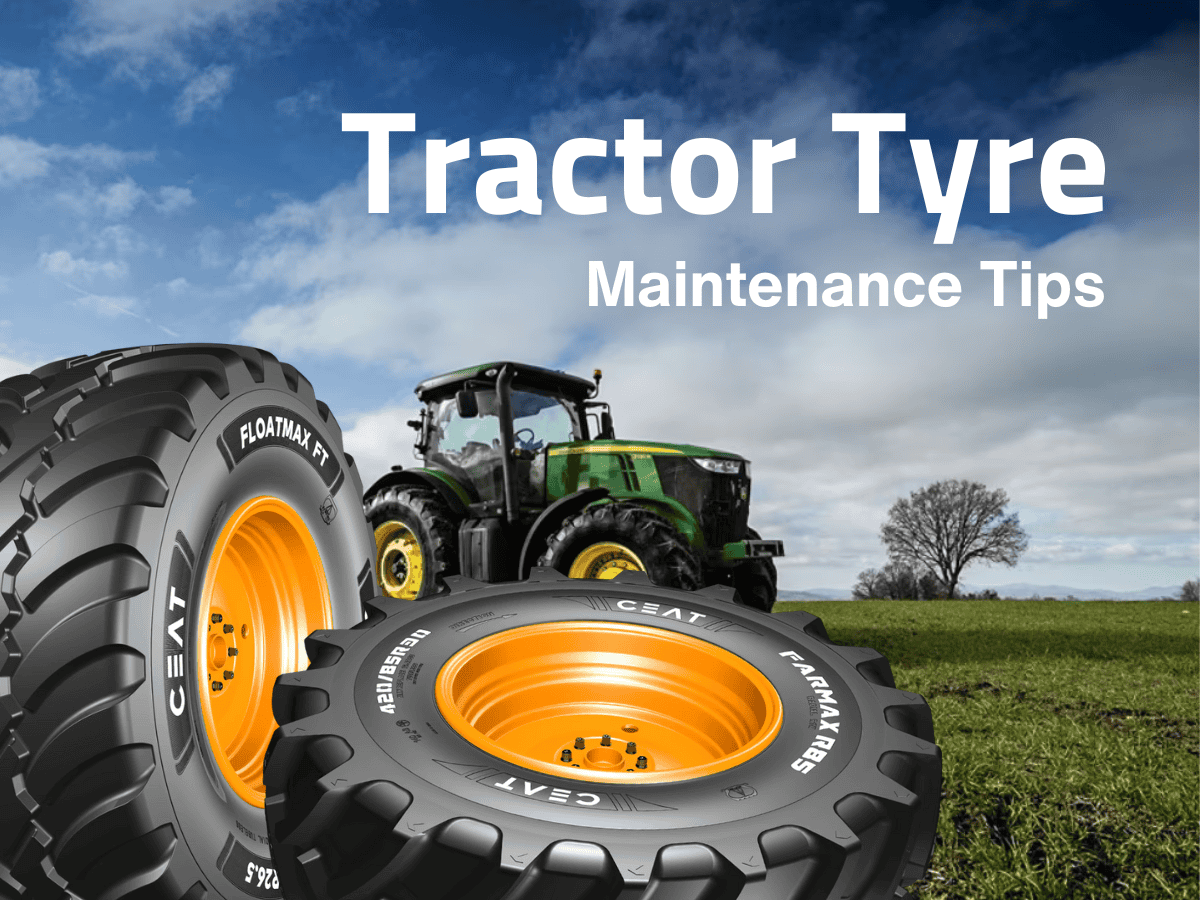ceat-speciality:blogs-tags/all,ceat-speciality:blogs-tags/tyre-care
Five signs that indicate you should change your tractor tyres
Mon, 14 Mar 2022 | PRODUCTS
Nobody wants to find themselves browsing tractor tyres price lists or searching the internet for ‘tractor tyres for sale’ or ‘tractor tyres near me’ more often than necessary. So what signs show when your tractor’s tyres require replacement?
1. Tread depth/tread bar height
One of the most apparent signs tractor tyres need replacement is the level of wear of the tread bars. Once the tread is at 10% of its original height/depth, it’s time to start considering replacement. For road travel and ‘top work’ tasks such as mowing or fertiliser spreading, there may not be too much noticeable loss of performance unless, of course, you are working on sloping ground and hills. In ploughing and other primary cultivation situations, though, tractor tyres worn to a tread depth of 10% and lower will be much less capable of transferring the tractor’s full power to the ground, and wheelslip and fuel use will increase as a result.
2. Tread damage
If the stone or flint content of your soils is high, the tread bars, the area between them and even the tractor tyre sidewalls can all become damaged, particularly if high-draft tasks such as ploughing and subsoiling are practised. In severe cases, cuts to the tractor tyre tread can lead to detachment of rubber portions, triggering the further breakdown of the tractor tyre. If, for whatever reason, your tractor’s tyres have significant areas of damaged tread, consider replacing them.
3. Sidewall damage
Damage to the sidewalls of a tractor tyre can occur if it has been under- or over-inflated for a time, but is also caused by, for example, sharp flints in stony soils when ploughing in the furrow. Sidewall damage can also be caused by kerb or pothole damage sustained during road travel. Sidewall damage can significantly affect the integrity of the structure of the tractor tyre and, at its most serious, this can result in a bulge as the air in the tractor tyre exploits the carcase weakness, with the potential for a tyre explosion. If the sidewall of a tractor tyre has sustained significant damage, even to a small area, it must be replaced.
4. Rubber compound perishing
Tractor tyres fitted to tractors that do only a few hours in a year and so are not regularly replaced can be subject to perishing, particularly on the sidewalls and between the tractor tyre treads. This can be exacerbated by higher orlower tractor tyre pressures than those recommended for the tyres. Perished rubber can lead to air loss from the tractor tyre carcase, particularly in tubeless tractor tyres, making the tyre more susceptible to penetration by sharp objects, potentially raising the risk of punctures. Replace tractor tyres that show severe signs of perished rubber.
5. Poor performance
Some tractor tyres are unsuited to the job they are being asked to do. Perhaps you have purchased a secondhanded tractor with poorly-manufactured or maintained tractor tyres, or that are unsuited to the work for which you intend to use the tractor. If you are not getting what you need from your tractor and its tyres, consult a tractor tyre specialist and do some research to see what better options are available.
Follow these five points, and you should ensure that your tractor tyres are changed on time to maintain the full performance of your machine. That will ensure you don’t find yourself again browsing tractor tyres price lists or searching the internet for ‘tractor tyres for sale’ or ‘tractor tyres near me’ too soon.




























































































































